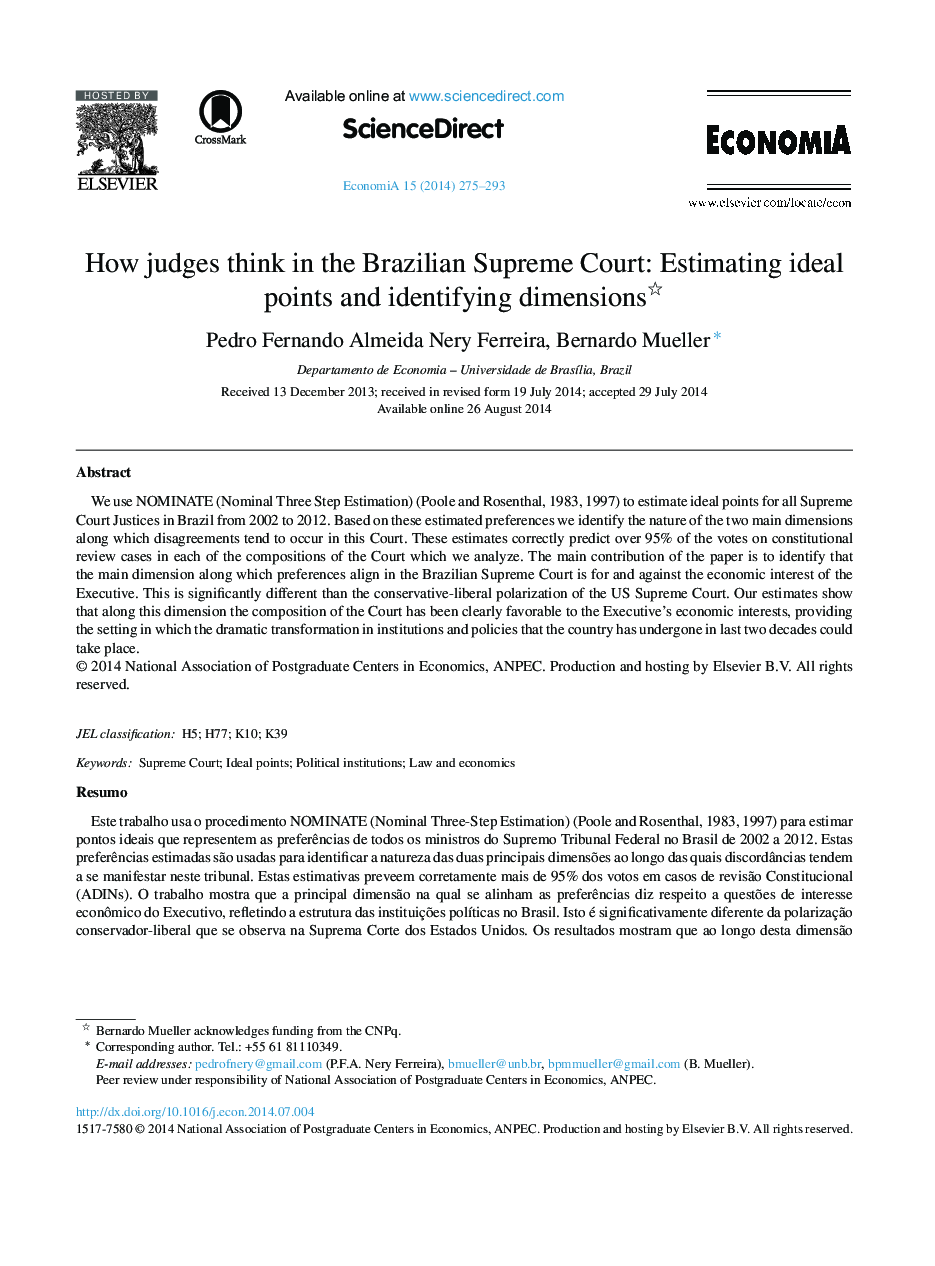| کد مقاله | کد نشریه | سال انتشار | مقاله انگلیسی | نسخه تمام متن |
|---|---|---|---|---|
| 995515 | 936225 | 2014 | 19 صفحه PDF | دانلود رایگان |
We use NOMINATE (Nominal Three Step Estimation) (Poole and Rosenthal, 1983, 1997) to estimate ideal points for all Supreme Court Justices in Brazil from 2002 to 2012. Based on these estimated preferences we identify the nature of the two main dimensions along which disagreements tend to occur in this Court. These estimates correctly predict over 95% of the votes on constitutional review cases in each of the compositions of the Court which we analyze. The main contribution of the paper is to identify that the main dimension along which preferences align in the Brazilian Supreme Court is for and against the economic interest of the Executive. This is significantly different than the conservative-liberal polarization of the US Supreme Court. Our estimates show that along this dimension the composition of the Court has been clearly favorable to the Executive's economic interests, providing the setting in which the dramatic transformation in institutions and policies that the country has undergone in last two decades could take place.
ResumoEste trabalho usa o procedimento NOMINATE (Nominal Three-Step Estimation) (Poole and Rosenthal, 1983, 1997) para estimar pontos ideais que representem as preferências de todos os ministros do Supremo Tribunal Federal no Brasil de 2002 a 2012. Estas preferências estimadas são usadas para identificar a natureza das duas principais dimensões ao longo das quais discordâncias tendem a se manifestar neste tribunal. Estas estimativas preveem corretamente mais de 95% dos votos em casos de revisão Constitucional (ADINs). O trabalho mostra que a principal dimensão na qual se alinham as preferências diz respeito a questões de interesse econômico do Executivo, refletindo a estrutura das instituições políticas no Brasil. Isto é significativamente diferente da polarização conservador-liberal que se observa na Suprema Corte dos Estados Unidos. Os resultados mostram que ao longo desta dimensão a Corte tem sido claramente favorável aos interesses econômicos do Executivo, criando condições propícias para a dramática transformação em instituições e políticas pela qual o Brasil tem passado nas últimas duas décadas.
Journal: EconomiA - Volume 15, Issue 3, September–December 2014, Pages 275–293
